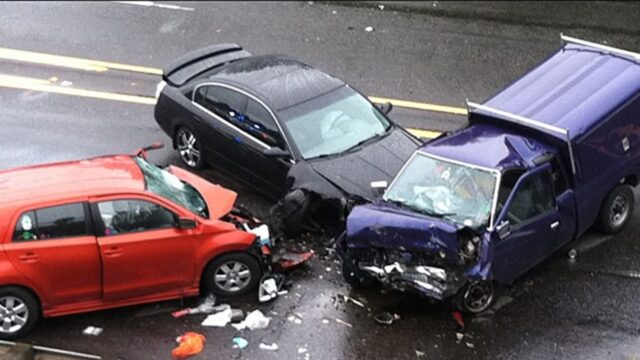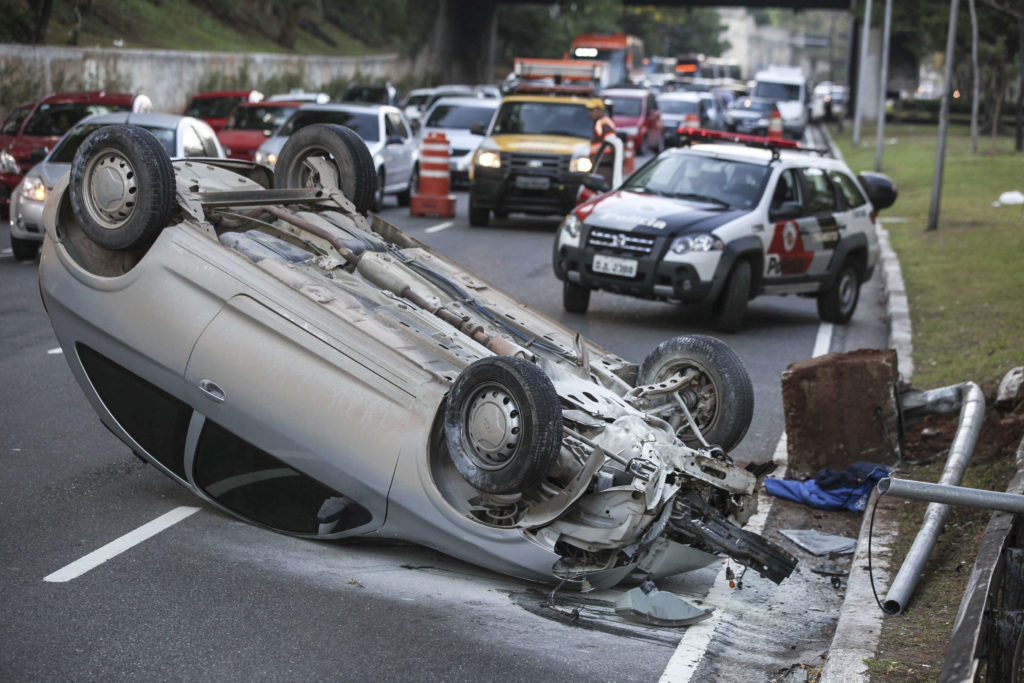
Car accidents are one of the leading causes of preventable death in Arkansas. In 2018, 1,530car-accident-related deaths occurred in the southern U.S. state.
While some accidents happen due to unforeseen circumstances, the majority of car accidents happen due to negligent driving.
According to statistics by the NHTSA, 94% of all road accidents are caused by human error.
Learning the potential reasons for driving accidents can raise safety awareness and help drivers adopt practices to remain safe behind the wheel.
In this blog, we’ll talk about some common causes of car accidents in Arkansas. Let’s begin!
Common Causes of Car Accidents Due to Driver Error
1. Distracted Driving
 Distracted driving is one of the leading causes of car crashes in the United States. It refers to driving while engaged in any activity that takes a driver’s mind off the road.
Distracted driving is one of the leading causes of car crashes in the United States. It refers to driving while engaged in any activity that takes a driver’s mind off the road.
In 2018 alone, 2,841 people lost their lives in distracted driving accidents in the U.S. Determining fault in these accidents can be tricky.
Some distracted driving activities are easy to determine, while others can be subjective, which makes it difficult to establish negligence.
For instance, texting while driving is an illegal activity and can result in a fine and license suspension.
On the other hand, arguing with the fellow passenger(s) can be equally distracting but isn’t illegal.
These accidents can easily be avoided by not engaging in any other activity while driving on the road.
2. Speeding
Speed is a crucial risk factor in road traffic injuries, increasing both the risk of car accidents and the severity of the injuries that result from the accidents.
In 2018, speeding-related car accidents claimed the lives of 9,378 people in the United States. In 2017, speeding was a contributing factor in 26% of all traffic fatalities.
Many reasons incentivize drivers to test the limits of their vehicle, though running late for work is one of the biggest reasons that lead to speeding.
Law enforcement agencies use speed cameras to reduce speeding-related accidents, but sadly, it remains one of the largest causes of car crashes in Arkansas.
3. Driving Under Influence

Drivers with a blood alcohol concentration (BAC) of 0.08% or higher are considered alcohol-impaired by law and are not legally permitted to get behind the wheels of a vehicle.
Drunk under the influence of alcohol also poses severe risks to public safety. Unfortunately, many people don’t understand the risks.
Every third traffic accident-related death in the United States involve a drunk driver. In Arkansas alone, 1,769 people were killed in crashes involving a drunk driver between 2003 and 2012.
Owing to safety initiatives like mass media campaigns and school-based instructional programs, accidents related to drunk driving have decreased over the past few years.
However, it remains one of the prevalent problems in Arkansas that creates a road safety hazard for drivers and pedestrians.
4. Running a red light
Running a red light happens more frequently than most people think. In 2018, 846 people lost their lives in crashes that involved running a red light.
As per the permissive yellow rule, a driver can legally enter an intersection during the entire yellow interval, but not after the onset of red light.
The vast majority of drivers run red lights because they’re feeling impatient or are late. Some people do it because they cannot stop in time due to distracted driving or speeding.
Regardless of a reason—or lack thereof—running a red light poses a significant risk for drivers, passengers, and other vehicles on the road.
5. Reckless Driving
Reckless driving is a major moving traffic violation in Arkansas that involve driving a vehicle with disregard for the safety of others.
The AAA Foundation Research found that 87 percent of drivers engage in unsafe behaviors while behind the wheel.
Some common examples of reckless driving include racing on a public roadway, performing stunts, block other vehicles, switching lanes too quickly, and more.
Failing to abide by cautionary measures and driving recklessly lead to deadly consequences for negligent drivers and other vehicles on the road.
6. Aggressive Driving
Aggressive driving is also prevalent among U.S.drivers and has become a major safety concern for many drivers on the road.
According to estimates by the AAA Foundation for Traffic Safety, millions of drivers engaged in angry and aggressive behaviors last year.
Examples of aggressive driving behaviors include speeding in heavy traffic, tailgating, weaving in and out of traffic, sideswiping, and more.
Like reckless driving, it can significantly increase the risk of car crashes. Here are some tips for dealing with aggressive drivers on the road:
- Maintain distance from aggressive drivers
- Remaining calm and courteous behind the wheel
- Avoid responding to aggression with aggression
- Pull out safely if a driver approaches you aggressively
- Call 911 if you feel threatened
Drowsy Driving

According to the NHTSA, every year, about 100,000 police-reported crashes involve drowsy driving, resulting in 1,550 fatalities and 71,000 injuries.
A drowsy driver’s ability to handle the vehicle is similar to someone under the influence.
Arkansas is one of the two states in the country that has criminalized drowsy driving; however, it can be extremely difficult to convict drowsy drivers.
While the fault of drivers under the influence can be determined by performing field sobriety tests, charging drivers with drowsy driving can be more complicated due to a lack of hard evidence.
8. Hire a Car Accident Attorney
As per Arkansas Code Annotated section 16-56-105, you have three years to file a civil lawsuit for any personal injury or damage to personal property due to a car crash, according to professional lawyer Lisa Douglas.
If you or a loved one have sustained injuries as a result of a car accident, hire a professional car accident attorney and pursue a case to obtain the compensation that you deserve.
Your attorney will investigate the case, evaluate facts, gather evidence, and formulate a strong case to help you obtain the maximum settlement for your loss and suffering.







